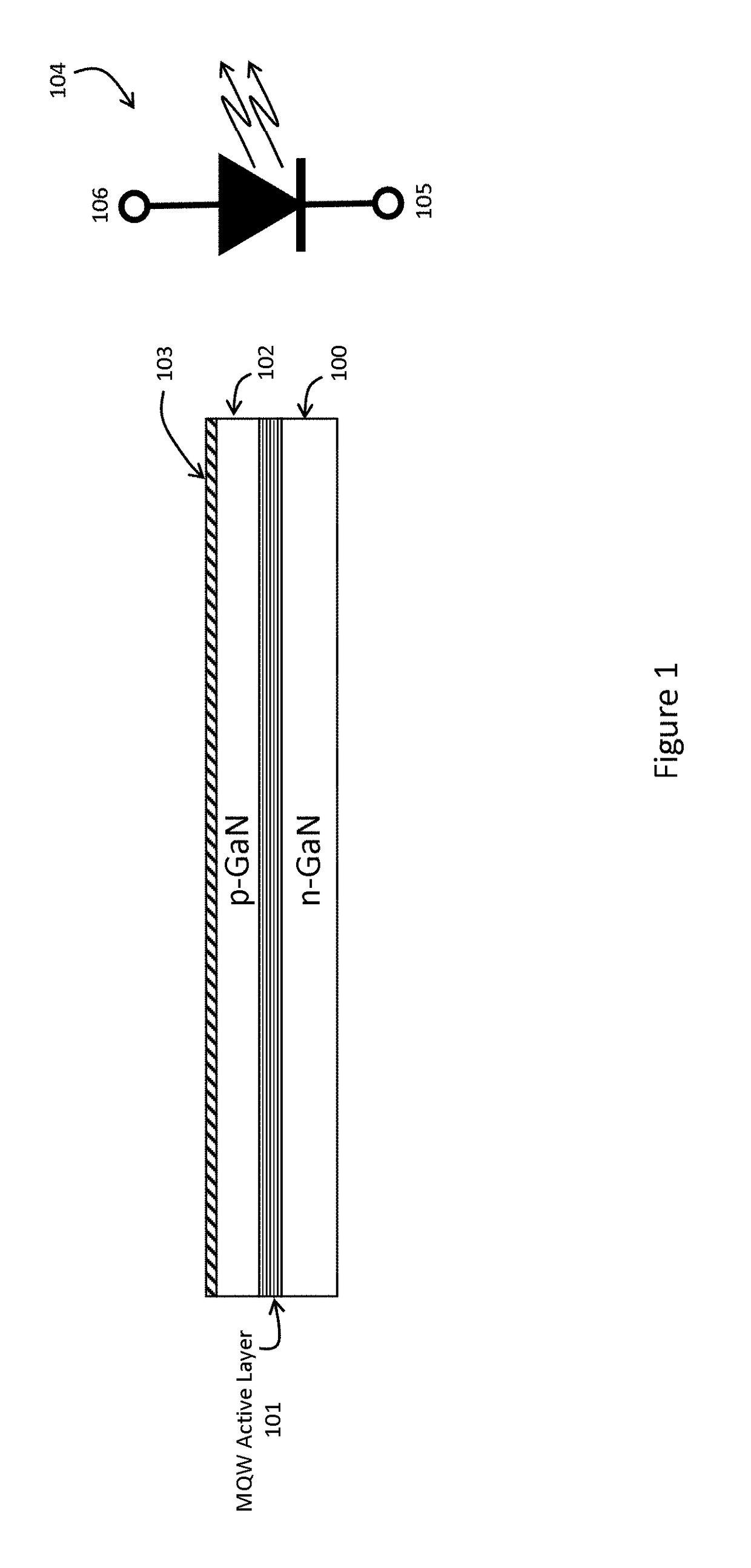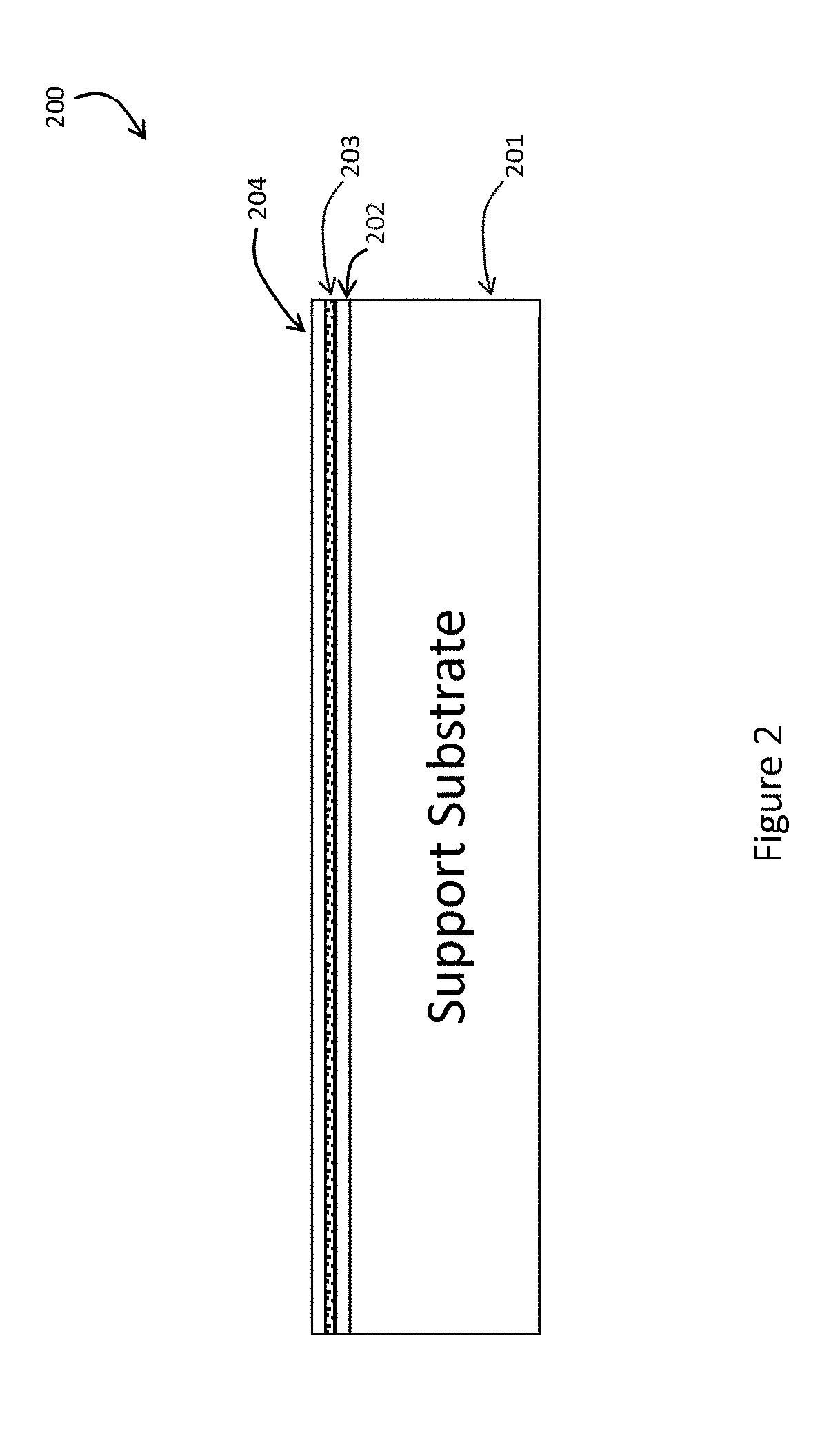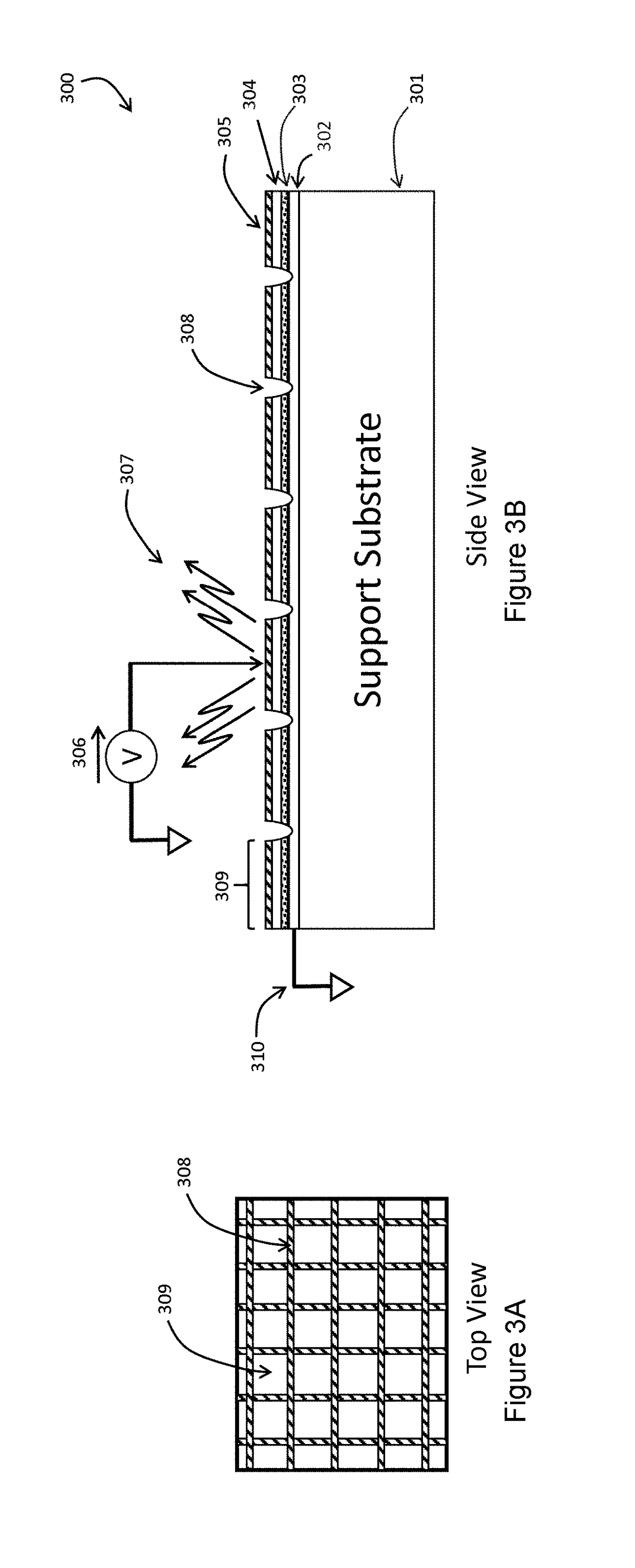Light emitting diode (LED) test apparatus and method of manufacture
a technology of light emitting diodes and test apparatus, applied in the field of mass-production scale manufacturing, can solve the problems of low yield and reliability of led devices, test reliability, and test reliability of probe pin cards having hundreds or even thousands of probe pins, and achieve the effect of reducing cost and reducing yield
- Summary
- Abstract
- Description
- Claims
- Application Information
AI Technical Summary
Benefits of technology
Problems solved by technology
Method used
Image
Examples
embodiment 1500
[0132]Although this invention has been described with a common contact existing under the LED devices, other current injection configurations are possible. FIG. 15A shows another embodiment 1500 where an analogue to the field plate 1501 is present within support substrate 1502 below the plurality of LED device structures such as LED device 1503. Under the lowest LED device structure layer (the n-layer in examples described in this invention), a dielectric layer 1504 and electrode 1505 completes the support substrate capacitive coupling device. Electrode 1505 is connected to a voltage source 1506. The field plate is connected to a separate voltage source 1507 and field plate electrode 1508. In this example, a camera 1509 is placed above the field plate to capture the light emission response of the plurality of LED devices under test. In this example, the isolation between devices is shown to be complete, however this method would still function with or without full isolation of the n...
embodiment 1600
[0133]In yet another embodiment, C2I functional testing could also be applied to a modification of the test configuration of FIG. 15A that eliminates the need for a buried electrode within the support substrate. In this embodiment, the dielectric property of the support substrate itself is used to inject current through the LED devices. For example, a quartz, sapphire, glass or plastic support substrate could serve as dielectric 1504 in FIG. 15A. FIG. 16 shows a specific embodiment 1600 of this configuration. A support substrate 1601 having adequate dielectric properties and thickness containing a plurality of LED devices on its surface such as LED device 1602 is placed on top of an electrode 1603 connected to a voltage source 1606. Although not shown specifically, a gap can exist between electrode 1603 and support substrate 1601, allowing non-contact operation of the back side of the support substrate if desired. Although not shown specifically, an additional dielectric can also be...
PUM
 Login to View More
Login to View More Abstract
Description
Claims
Application Information
 Login to View More
Login to View More - R&D
- Intellectual Property
- Life Sciences
- Materials
- Tech Scout
- Unparalleled Data Quality
- Higher Quality Content
- 60% Fewer Hallucinations
Browse by: Latest US Patents, China's latest patents, Technical Efficacy Thesaurus, Application Domain, Technology Topic, Popular Technical Reports.
© 2025 PatSnap. All rights reserved.Legal|Privacy policy|Modern Slavery Act Transparency Statement|Sitemap|About US| Contact US: help@patsnap.com



